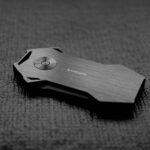So you’re in the market for a new digital audio player (DAP), or maybe you’re not but you just love gadgets like I do… In this golden age of portable audio you have a myriad of choices for your portable audio needs: Astell & Kern, FiiO, iBasso, Apple, Lotoo, Cowon, Sony, Colorfly, HiFiMan, HiSound, Hidizs, Calyx, and the list goes on. So which one do you choose?
The answer to that is very complex because it’s all about personal tastes and requirements. If you’re after streaming or bluetooth you can knock quite a few off the list. If you’re after playlist support the pool of choices looks different again. Aficionados of industrial design will seek a different subset still. And finally, the availability and ease of purchase may influence your decision regardless of your priorities and requirements.
For this comparison article I was fortunate enough to have in my possession 4 of the top options in the mid-priced market at the moment plus one more budget option that performs way better than it should. I personally own the outstanding, but largely unknown HUM Pervasion and the budget superstar Shozy Alien. Through Head-Fi community tours I was able to access the FiiO X5 2nd generation (X5ii) and the Cayin N6. Finally, the generosity of a fellow Head-Fier, lin003, meant that I was able to borrow an iBasso DX90 for a week or so during this comparison.
Overview of the Competition
Let’s start by looking at each of the units with some ‘on paper’ details about each:
HUM Pervasion
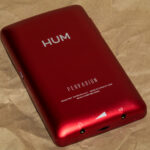 The HUM Pervasion is an obscure offering in this market and can be a little tricky to find at retailers. It offers a no frills Android interface and all of the flexibility that comes with that, packaged in a casing reminiscent of the old iPhone 3, but thicker than that. Retailing for around $530 (AUD) it sits in the middle of this selection price-wise.
The HUM Pervasion is an obscure offering in this market and can be a little tricky to find at retailers. It offers a no frills Android interface and all of the flexibility that comes with that, packaged in a casing reminiscent of the old iPhone 3, but thicker than that. Retailing for around $530 (AUD) it sits in the middle of this selection price-wise.
Key features / considerations
- Full size touch screen (whole face of unit like iPhone / iPod touch)
- Powerful amplifier
- Highly flexible / customisable
- Limited to 44.1 – 48kHz sample rates only (no hi-res or DSD)
- Relatively compact and light
- Line-out and headphone out – no digital out
- No USB DAC function (for use with computer)
Cayin N6
 The Cayin N6 is the first DAP from Chinese manufacturer, Cayin, who made a good start in the market with their C5 amplifier and have since also followed-up with a DAC/amp combo product. The N6 offers a custom interface that’s reminiscent of the early FiiO X5 (1st generation) interface, but will likely change via firmware updates over time. The N6 sports a gorgeous design including real carbon fibre on the back, but it’s quite large and heavy. At around $750 (AUD), the N6 is one of the most expensive options before you leap to flagship level DAPs like the Astell & Kerns, Calyx M and Cowon Plenue. For the record, the use of the term ‘flagship’ here isn’t to suggest that these offer significant performance upgrades so much as the premium price tags – I am making no attempt to compare the performance of any other DAPs beyond those specifically listed in this review.
The Cayin N6 is the first DAP from Chinese manufacturer, Cayin, who made a good start in the market with their C5 amplifier and have since also followed-up with a DAC/amp combo product. The N6 offers a custom interface that’s reminiscent of the early FiiO X5 (1st generation) interface, but will likely change via firmware updates over time. The N6 sports a gorgeous design including real carbon fibre on the back, but it’s quite large and heavy. At around $750 (AUD), the N6 is one of the most expensive options before you leap to flagship level DAPs like the Astell & Kerns, Calyx M and Cowon Plenue. For the record, the use of the term ‘flagship’ here isn’t to suggest that these offer significant performance upgrades so much as the premium price tags – I am making no attempt to compare the performance of any other DAPs beyond those specifically listed in this review.
Key features / considerations
- Buckets of power
- Small, non-touch display (relative to Pervasion)
- Plays all major codecs including hi-res FLAC and DSD
- Large and a bit heavy
- Line-out, headphone out and digital out
- USB DAC function
FiiO X5 (2nd Generation)
 FiiO’s second attempt at a top notch DAP ‘builds’ on the already excellent 1st generation X5 (which I owned for a period of time). At around $440 (AUD) it’s well priced for its specs and matches up very well on paper with the significantly more expensive N6. It’s smaller than the N6 and although not quite as sexy (recognising variations in personal preference) as the N6, the X5ii is also very well designed and put together.
FiiO’s second attempt at a top notch DAP ‘builds’ on the already excellent 1st generation X5 (which I owned for a period of time). At around $440 (AUD) it’s well priced for its specs and matches up very well on paper with the significantly more expensive N6. It’s smaller than the N6 and although not quite as sexy (recognising variations in personal preference) as the N6, the X5ii is also very well designed and put together.
Key features / considerations
- Powerful amplifier
- Small, non-touch display (roughly the same as N6)
- Plays all major codecs including hi-res FLAC and DSD
- Smaller and lighter than N6, but still larger and heavier than the other options here
- Line-out, headphone out and digital out
- USB DAC function
iBasso DX90
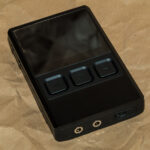 iBasso held the throne for the ultimate DAP for many years with their DX100 (or HDP-R10 in Japan) and have recently retired the chunky but legendary DX100 for favour of their smaller line-up. The DX90 is the second most expensive player in this comparison at around $660 (AUD) and it blends elements of the decoding power of the X5 / N6 with the more compact footprint and touch screen of the Pervasion.
iBasso held the throne for the ultimate DAP for many years with their DX100 (or HDP-R10 in Japan) and have recently retired the chunky but legendary DX100 for favour of their smaller line-up. The DX90 is the second most expensive player in this comparison at around $660 (AUD) and it blends elements of the decoding power of the X5 / N6 with the more compact footprint and touch screen of the Pervasion.
Key features / considerations
- Plenty of power
- Small touch screen
- Hardware buttons for play / pause and forward / back
- Plays all major codecs including hi-res FLAC and DSD
- Small and light, especially when considering functionality
- Line-out, headphone out and digital out
- USB DAC function
Shozy Alien
Very much the dark sheep in this comparison, the Alien is dwarfed in price, size, and functionality, but is beautifully designed (aesthetically speaking) and built. For around $250 (AUD) and with such striking looks and interface, the Alien has won quite a lot of hearts in its short time in the market.
Key features / considerations
- Won’t drive challenging headphones, but plenty of power for in-ears and headphones designed for portable use
- No screen – simple button navigation system
- Basic, no frills functions (play, stop, skip track, change folder)
- Only plays WAV and FLAC
- 44.1 – 48kHz sample rates only (no hi-res / DSD)
- Tiny and light
- Headphone out only (no line-out)
- Memory card must be removed from device to load with music (USB socket on Alien is for charging only)
As you can see from this list of general features and factors, some people will be drawn instantly to certain devices and repelled from others. For example, the Alien is instantly dropped out of the running by some people when they discover that it has no screen. For others, DSD is a must have and the Pervasion and Alien are out of the running. Before we get into all that though, let’s look at the performance of these in everyday use.
Non Sound Quality Pros & Cons
The following pros and cons combine some of the facts / features mentioned already along with some factors that became more obvious when I used the device for an extended period. Each device offers unique benefits and drawbacks that will appeal to or repel different people. What is a ‘dealbreaker’ for you may not be for me and vice versa. Sound quality has not been considered here – that comes next.
Cayin N6
Pros: Gorgeous design. Coaxial out. Outstanding build quality.
Cons: Large. A bit heavy. No playlist support. User interface is a bit immature and feels a bit bland, but not in a deliberate, stripped-back way. The high gain mode seems completely redundant given how powerful low gain is and how wide the volume range is.
HUM Pervasion
Pros: Android interface is highly customisable including the choice of various player apps and their individual features. Compact size. Light weight. Large screen. Touch screen. Full playlist support.
Cons: No hi-res audio support. Looks a bit basic and cheap (but feels good so this is not a reflection of actual quality). Interface is generally responsive, but could be a touch snappier. No USB DAC functionality (all other DAPs in this comparison have this feature).
FiiO X5 2nd Generation
Pros: Best power management system so good battery life. Twin micro SD slots means more storage than the others.
Cons: Playlist support is there, but it’s clunky (you have to go into the folders to access externally created playlists). Interface is quite slow when moving through levels of the browser. Scroll wheel is imprecise and doesn’t always move the onscreen cursor even though there is a clear tactile ‘click’ from the wheel.
iBasso DX90
Pros: Very compact. Touch screen. Snappy and responsive interface. Attractive, but simple design. Apparently can run Rockbox (not tested).
Cons: No playlist support (stock firmwares, not Rockbox). Screen is quite small for a touch interface.
Shozy Alien
Pros: Small and light. Simple interface means simplified music management. Unique design.
Cons: No display. No playlists. Limited codecs. Need to remove memory card to access files. No simple shuffle function (there is apparently a button combo that results in shuffle play, but I have never taken the time to test it)
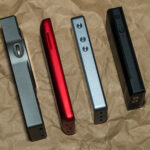 So, the conclusion from all of this is that they are all quite balanced in their offerings. The N6 wins on aesthetics while the X5 wins on power management. The Alien triumphs for size and the Pervasion is superior for customisation and interface functionality (playlists, etc.). You might have found some dealbreakers already, but for me it was still very much up in the air and requires sound quality and power comparisons to really separate these four excellent offerings.
So, the conclusion from all of this is that they are all quite balanced in their offerings. The N6 wins on aesthetics while the X5 wins on power management. The Alien triumphs for size and the Pervasion is superior for customisation and interface functionality (playlists, etc.). You might have found some dealbreakers already, but for me it was still very much up in the air and requires sound quality and power comparisons to really separate these four excellent offerings.
Sound Quality Comparison
Testing Methods and Gear
- IEMs: Noble Kaiser 10
- Portable Headphones: Oppo PM-3 (courtesy of Head-Fier ‘d marc0’)
- Desktop Headphones: Audeze LCD-2 (just pre-fazor)
A range of tracks were used including:
- Steely Dan – Home At Last (DSD & 44.1kHz / 24-bit WAV)
- Alison Krauss & Union Station – Lay My Burden Down (96kHz / 24-bit FLAC & 44.1kHz / 24-bit WAV)
- Australian Chamber Orchestra – Mozart Symphony No. 40, Menuetto (44.1kHz / 16-bit FLAC)
- Sarah McLachlan – Fallen (Live) (44.1kHz / 16-bit FLAC)
All comparisons were volume matched as closely as possible by ear and all listening was conducted over longer periods to avoid initial biases to different signatures between devices.
Earphone & Headphone Power / Quality Comparisons
I tested each player with IEMs, slightly challenging portable headphones (Oppo PM-3), and challenging desktop headphones (Audeze LCD 2). In all cases, the EQ functions were off and only the onboard amplification was used to drive each load. All players except the Alien handled each load with no trouble at all. In general the only points of note were how much volume was required for different loads and a tiny bit of noise through IEMs in one situation.
IEMs
I heard some noise from the HUM Pervasion, but only when the screen was on. That might worry some people, but I don’t really mind because the screen is off for 99% of my listening. The noise is noticeable though so some might have an issue with it for IEM usage. The Alien also exhibits a slight hiss with sensitive IEMs, but it’s only noticeable when no music is playing and many users have reported no noticing the hiss so this may be a reflection of how sensitive I am to hiss. In terms of the comparison, the Pervasion and Alien were the only players with any hiss.
As for volume levels with IEMs, each player was fully capable of driving IEMs without channel imbalances or too much volume (i.e. not enough usable range on the volume control). This was helped by the N6, X5ii, and DX90 all having digital volume controls. The Pervasion was slightly more challenging with stock settings, but player apps like PlayerPro allow digital (‘lossless’) gain reduction which rectifies this issue completely. On top of that, the Pervasion’s analog volume control has excellent channel balance right down to the very lowest levels.
In short, you can’t really split these players on IEM performance, except if the slight hiss from the Alien or the screen noise from the Pervasion is a no-go for you.
Volumes required to comfortably drive Noble K10s:
- Cayin N6: 20% (low gain)
- HUM Pervasion: impossible to accurately guage on analog control, but good usable range
- FiiO X5ii: 40% (low gain)
- iBasso DX90: 70% (low gain)
- Shozy Alien: hard to guage exact level without a display, but I found a few clicks below the default start volume was ideal
Portable Headphones
I chose the PM-3s for this test because they’re more challenging than something like the Thinksound On1, but as it turns out, none of these players other than the Alien had any trouble with the slightly more challenging planar technology of the PM-3s. The Alien bows out of further power testing here due to really only being suitable for IEMs and smaller portable headphones. It’ll return to the fray in the sound quality comparison. Before it ‘took a seat on the bench’ though I tested the PM-3s with the Shozy Alien just to check if the PM-3s were easier to drive than I thought and the Alien’s lack of performance with the PM-3s proved that they are a little bit challenging if a device’s amp doesn’t have some grunt. What this means is that all of the players in this comparison are able to comfortably and authoritatively drive even challenging portable headphones equally. Of course, sound signature will come into how good it sounds, but this is just about power for now.
Volumes required to comfortably drive Oppo PM-3s:
- Cayin N6: 40% (low gain)
- HUM Pervasion: impossible to accurately guage on analog control, but plenty of available headroom
- FiiO X5ii: 73% (low gain)
- iBasso DX90: 79% (medium gain)
- Shozy Alien: N/A
Desktop Headphones
I decided on the LCD 2s for this test because they are also challenging to drive. For the sake of power testing only, I thought the LCDs were a good option, but I personally find them quite forgiving so I double-checked with HD800s to make sure that the sound was also being well-controlled and maintained, not just volume levels. In all cases I was surprised at how well the DAPs managed with these full-size cans.
Volumes required to comfortably drive Audeze LCD 2s:
- Cayin N6: 60% (low gain)
- HUM Pervasion: impossible to accurately guage on analog control, but plenty of available headroom
- FiiO X5ii: 80% (high gain)
- iBasso DX90: 90% (high gain)
- Shozy Alien: N/A
As you can see, at this level the X5ii and DX90 are reaching their limits. If you’re a loud listener you would probably run out of juice with those two options. The N6 is clearly the ballsiest of the bunch, but the Pervasion held its own very well and had plenty of headroom remaining on the volume.
At this point I have to question the point in having a high gain mode on the N6. It has sufficient range to drive IEMs and desktop cans all in low gain mode so I don’t get why they created two modes, but it doesn’t hurt I guess.
Sound Quality & Overall Impressions
To test the sound quality, I used the Noble K10s across the board while also taking into account what I heard during the headphone tests. I will share some subjective observations about what I heard and also my personal preferences for each presentation, but keep in mind that my tastes hear might vary from yours.
By the way, apologies for the colour balance in my images here. Normally I would re-take these shots, but I don’t have all of the devices anymore.
Cayin N6
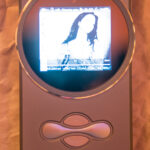 The N6 offers excellent bass power and presence with a lift in the lower treble that makes the overall sound a little bit cool and a touch edgy. Personally, I find that this lower treble emphasis creates an unnatural ‘plasticness’ to the sound that distracts me from the rest of the signature and results in quite a forward sound. It can make the N6 seem extra detailed (depending on the ‘phones used), but I think overall it’s a drawback. Switching to the line-out shows that this characteristic comes from the DAC rather than the amp as the N6 sounds almost identical when its signal is fed to a transparent amp.
The N6 offers excellent bass power and presence with a lift in the lower treble that makes the overall sound a little bit cool and a touch edgy. Personally, I find that this lower treble emphasis creates an unnatural ‘plasticness’ to the sound that distracts me from the rest of the signature and results in quite a forward sound. It can make the N6 seem extra detailed (depending on the ‘phones used), but I think overall it’s a drawback. Switching to the line-out shows that this characteristic comes from the DAC rather than the amp as the N6 sounds almost identical when its signal is fed to a transparent amp.
In terms of staging and presentation, the N6 is the widest sounding of the lot, but is very flat sounding (due in part to that lower treble lift). Everything from the N6 sounds like it’s stretched wide between your ears, but it doesn’t really extend forwards much. Interestingly, the presentation varies greatly between DSD and PCM files with DSD sounding noticeably more spacious and organic. PCM files are largely ‘in-your-face’ and a bit congested to my ears with higher res (96kHz / 24-bit) faring slightly better than redbook files (44.1kHz / 16-bit).
Overall, the N6 presents a very detailed recreation of a recording, but never tricked me into forgetting that it was a recording. Technically it’s great, but it lacks soul to my ears with most of the pairings I tried. With spacious-sounding ‘phones like the HD800s, the N6 sounds better thanks to the support of the headphone’s natural characteristics, but other DAPs in this comparison are able to achieve this same sense of space and reality with a wider range of ‘phones.
HUM Pervasion
 The Pervasion is like the anti-N6. It is smoother in the treble and a little bit warm, although it does share a similar powerful bass presence with the N6.
The Pervasion is like the anti-N6. It is smoother in the treble and a little bit warm, although it does share a similar powerful bass presence with the N6.
In doing this test I discovered that the Pervasion may have a slightly higher-than-ideal output impedance because it sounds a bit warm with the K10s, but seems less warm with the headphones used for testing. This is further corroborated by testing the line-out which shows a very neutral and clean sounding DAC output. The line-out is still smooth, but not warm – it’s actually very neutral across the board and makes for an exceptional source to an external amp.
So, with the K10s I would describe the Pervasion as about 2% too warm and thick, but with the headphones used I would say the Pervasion is spot on in terms of its signature. It offers excellent treble and bass extension and clarity, and slightly creamy mids that are organic and rich without becoming thick or slow.
In terms of staging and presentation, the Pervasion throws a fairly narrow stage, but a stage with good forward projection. It’s a very lifelike presentation that is reminiscent of a live performance although a tiny bit more width would be great. Unlike the N6, I find with the Pervasion that the sense of listening to a recording is quickly lost and just the enjoyment of the music remains.
Overall, the Pervasion offers the second most true-to-life listening experience of this comparison and if we take out the extra warmth with IEMs, the Pervasion might actually edge in front…
FiiO X5 2nd Generation
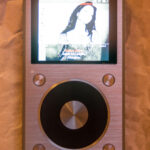 The X5ii sounds like an ugly love child of the Pervasion and the N6. Sorry if that sounds harsh, but it really combines the worst characteristics of both. In isolation, the X5ii sounds fine – good even – but in this company, the X5ii falls short to my ears.
The X5ii sounds like an ugly love child of the Pervasion and the N6. Sorry if that sounds harsh, but it really combines the worst characteristics of both. In isolation, the X5ii sounds fine – good even – but in this company, the X5ii falls short to my ears.
Its sound is noticeably warm and a little bit thick due to treble that’s slightly too smooth and perhaps a touch rolled-off. Where the original X5 could tend towards a slightly grainy treble, I feel like the X5ii is erring the other way and a bit too much. The signature of the X5ii is just warmer than neutral so it’s not massively warm, but it’s just a bit too smooth for its own good and could do with a touch of crispness or sharpness to keep things sounding energetic and lively. This issue seems to come directly from the amp stage in the X5ii (an issue I also had with the original X5). If you connect the X5ii’s line-out to a nice amplifier you are greeted with a much cleaner, crisper sound and actually a sound that, while still a touch 2-dimensional, is easily comparable to the other DAPs in this comparison and actually slightly more realistic sounding than the N6 to my ears because the X5ii doesn’t have the enhanced lower treble.
In terms of presentation, the X5ii is quite similar to the N6. It stretches the sounds well from left to right, although not quite as widely as the N6, but it lacks forward projection and ends up sounding a bit flat and 2-dimensional, much like the N6. Also like the N6, the X5ii improves greatly with DSD files compared to PCM files although it’s not quite as noticeable with the X5ii as it was with the N6.
Overall, the X5ii is a great choice if you run a separate amplifier, but on standalone sound quality it falls pretty short of the others in this comparison, in my opinion. I suppose we should keep price in mind here because it’s the cheapest of the bunch (other than the Alien), but as a direct competitor in many other ways, it’s a shame that the headphone output isn’t of higher quality.
iBasso DX90
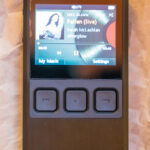 The iBasso DX90 stole the show for me. I’ve already alluded to the fact that there were two players I enjoyed almost equally (in terms of sound quality) and the DX90 is my 1A to the Pervasion as my 1B.
The iBasso DX90 stole the show for me. I’ve already alluded to the fact that there were two players I enjoyed almost equally (in terms of sound quality) and the DX90 is my 1A to the Pervasion as my 1B.
The DX90 has a perfect signature that is neutral and clean without becoming clinical. The music retains its soul without becoming thick or warm. I always find it a good sign if I can’t really describe the signature of a player and that’s how it is with the DX90. If I compare it to the Pervasion driving headphones (not IEMs affected by higher output impedance), the two sound very similar except that the DX90 is very slightly more open in the treble and a little bit crisper as a result. Depending on the ‘phones, the DX90 vs Pervasion question might come down to whether you want a touch or crispness or a touch of smoothness.
In terms of presentation, the DX90 also strikes a perfect balance between all of the players in this comparison. It sounds wider than Pervasion, but not as wide as the N6 and it projects forward more like the Pervasion and therefore has a nice, 3-dimensional sound. It doesn’t offer a huge soundstage, but none of the DAPs in this comparison do so the DX90 is the best of the bunch in this area, in my opinion. It was also encouraging to notice that DSD and PCM files sounded almost identical on the DX90 so there’s not that massive quality difference between DSD and PCM that was evident with the N6 and to a lesser degree with the X5ii.
Shozy Alien
After its short rest ‘on the bench’ during power testing, I brought the Alien back into the fray for some sound quality comparisons…
The Alien falls a little short of most of the others in terms of sheer detail retrieval, but that’s not the end of the game. Despite the little bit of hiss and slight lack of detail (relative to the other players in this comparison) it sounds fantastic. The signature is at once dynamic and mostly neutral. The treble is slightly smooth compared to a player like the N6, but not as much as the X5ii and the Alien remains bright enough to sound energetic and alive without drifting towards fatigue.
Where the Alien really shines is its presentation. The soundstage is large in every direction and somehow it makes every recording sound better, but without colouring or negatively altering the recording in any way. I have found on multiple occasions that a recording that’s great on the Alien sounds just OK on other players and yet it doesn’t sound different on the Alien in terms of sound signature / frequency response. To my ears it’s the way the Alien presents the sound that makes it special – sounds are placed perfectly in a big open space and the listener becomes fully engaged in every moment. It might not win on flat out performance (detail retrieval, etc.) or specifications, but the Alien holds its own in this collection by virtue of that magical presentation.
Conclusions and Opinions
If I had to buy one of these players today, the decision for me would come down to either the DX90, the Alien or the Pervasion. To my mind, the N6 is too expensive and doesn’t sound as good as the alternatives unless you’re listening only to DSD, but even then it still has slightly unnatural treble that results in a sound that always sounds like a recording. The X5ii just doesn’t cut it in this company and unless your budget just can’t stretch higher, I don’t see why you’d choose it over any of these.
The Alien holds a unique place here as a budget, compact performer. If size and price matter, the Alien is a no-brainer, but remember you’re sacrificing a screen, playlist support, and wide codec compatibility (WAV and FLAC only for the Alien).
As for the DX90 / Pervasion decision, that’s tougher…
The DX90 looks better, feels better (by a small margin), has a snappier interface, crisper sound, and no variation of signature with low impedance IEMs, but lacks playlist support and is noticeably less powerful than the Pervasion both in terms of its headphone output and its line out which is quite low voltage it seems (based on the level of volume required from my external amp).
The Pervasion has a beautiful big screen which looks great and is easier to interact with as a touch interface. It also has more power, full playlist support, customisation options via player apps to allow replay gain, cross-feed, virtualisers, and bass boost, but it doesn’t do hi-res audio and may have a slightly higher-than-ideal output impedance which may be a borderline issue with IEMs (not major like other units I’ve tried but it may be having a slight influence on the sound).
So, taking all of this into account, I actually have no idea which I would buy if I didn’t already own the Pervasion because playlists are important to me, but not crucial and the Pervasion is harder to buy because it’s not readily available through retailers, and has that slightly warm sound when used with most IEMs. On the other hand the DX90 is more expensive and less powerful…
I would probably end up with a DX90, but only because it’s easier to buy. Honestly, I think both players are brilliant and significantly ahead of the Cayin N6 and FiiO X5ii. This statement comes with apologies to both FiiO and Cayin though because both devices are excellent in isolation, but just don’t stack against some of the tougher competition when measured by the features that I prioritise (mostly sound quality). If I prioritised power, DSD playback, battery life, or storage capacity above all else then the N6 or X5ii might gain some ground, but there are other players on the way (Aune M2 for example) that might raise the bar higher if they can maximise both PCM and DSD quality rather than favouring DSD.
I’m hoping to get my hands on the M2 when it’s released and will provide a review if I can. Don’t forget to subscribe if you’re still on the fence and waiting for your perfect player!
Click on the links here for full reviews of the Shozy Alien and HUM Pervasion


